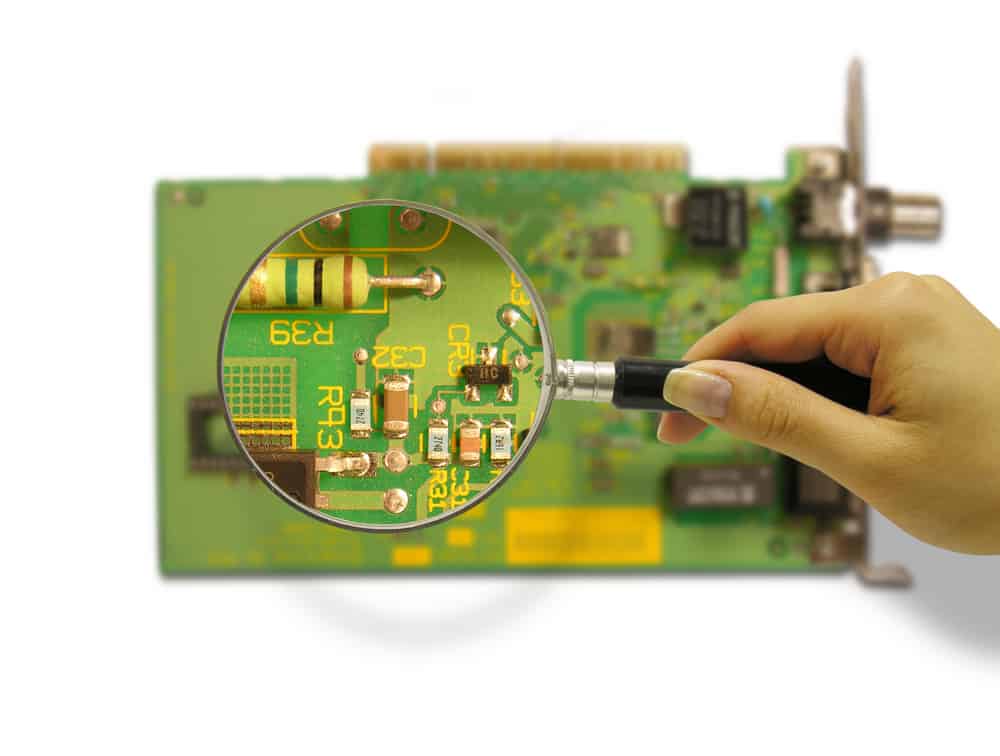
If you’re a designer who has started a new job, then you’re probably familiar with the time required to come up to speed on existing designs. Current products and older designs often have a slew of components that are tough to identify just by looking at them, especially when documentation isn’t available. In those cases, it is up to you to correctly identify the components in your design.
Learning how to identify electronic components involves more than just specifying part numbers for a component you find in the lab. Tasks like reverse engineering a design, rebuilding documentation for an old design with new components, and debugging an old product without documentation all require the same strategies for identifying the parts. If you find yourself in this situation, there are some online resources you can use to help you identify electronic components and find suitable replacements.
Steps to Identifying Electronic Components |
|
|
Types of Component Markings |
|
|
Examining the PCBA |
|
|
Researching Design Files and the BOM |
|
|
What to Do When You Can’t Identify Electronic Components |
|
Types of Component Markings
Most electronic components have some information printed on them to help with their identification. The markings on larger components will identify their manufacturer and part number. However, for smaller components, such as SMD passives in small packages (0201, 0402, etc.), there won’t be any way to identify their specific MPN. Still, you can at least take some steps to determine the component’s value. In other cases, the component may not have any usable information printed on it, and without usable documentation, you will have to find a replacement part on your own.
Examining the PCBA
When looking at the PCBA for debugging or reverse engineering, you can usually see component information printed directly on some parts. Integrated circuits and larger radial/axial capacitors will have markings stating their MPN, value, manufacturer, and other information. You can then put this information into a search engine and locate more information about the component.
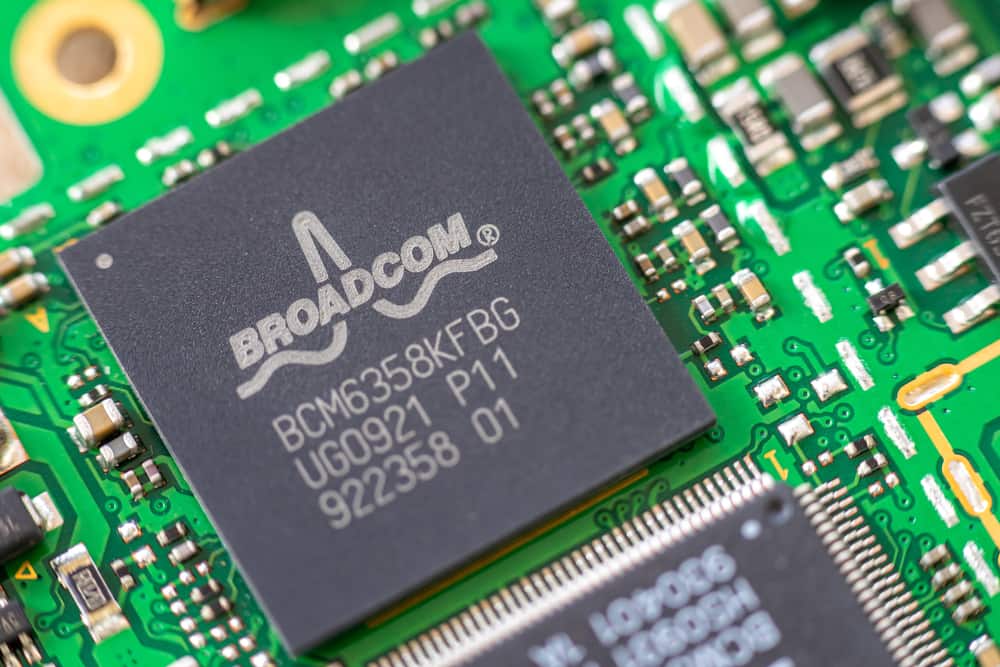
The MPN for this Broadcom chip is BCM6358KFBG. You can put this number into a parts search engine or distributor website to find more information about this component
To determine their value, you can identify thru-hole resistors through their printed color code. Although you won’t be able to identify their manufacturer, you can still start looking at distributors to search for replacements as needed. Other passives and smaller ICs may not have a simple method for extracting a component value or part number, so you must rely on design documentation for their identification.
Researching Design Files and the BOM
If you have the design documentation available for your PCBA, simply match the reference designator on the board with the entry in the BOM. As long as the BOM is complete, you’ll see a supplier PN of an MPN for the component. Identifying electronic components using the BOM can be done for any part as long as the reference designator is visible on the silkscreen layer, as shown below.
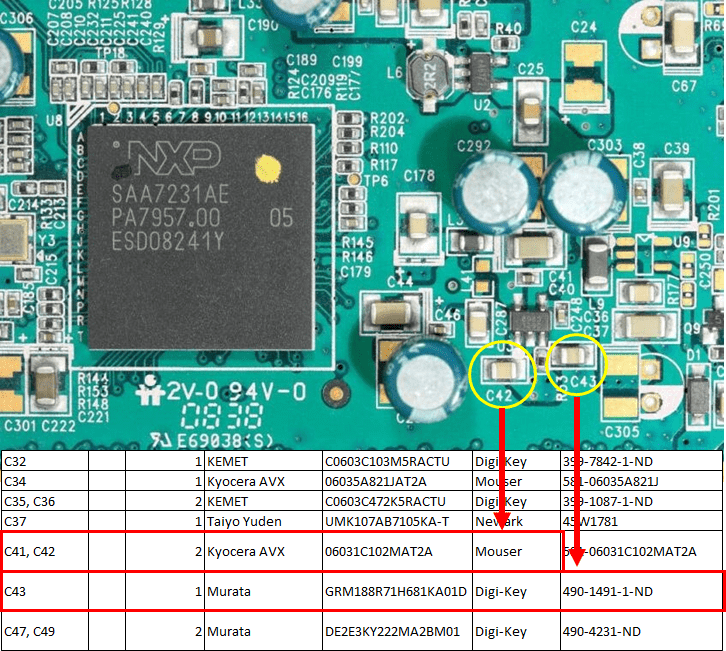
You can match reference designators in the PCB layout with entries in the BOM
You might not have the finished BOM in other designs and only have some design files. In these cases, you may need to examine the design files until you find the specific component. As long as the design libraries are complete, you can point to the specific component in the design data and pull out its supplier information. The picture below shows an example where the circuit board’s part library information should give you the MPN, supplier PN, or both.
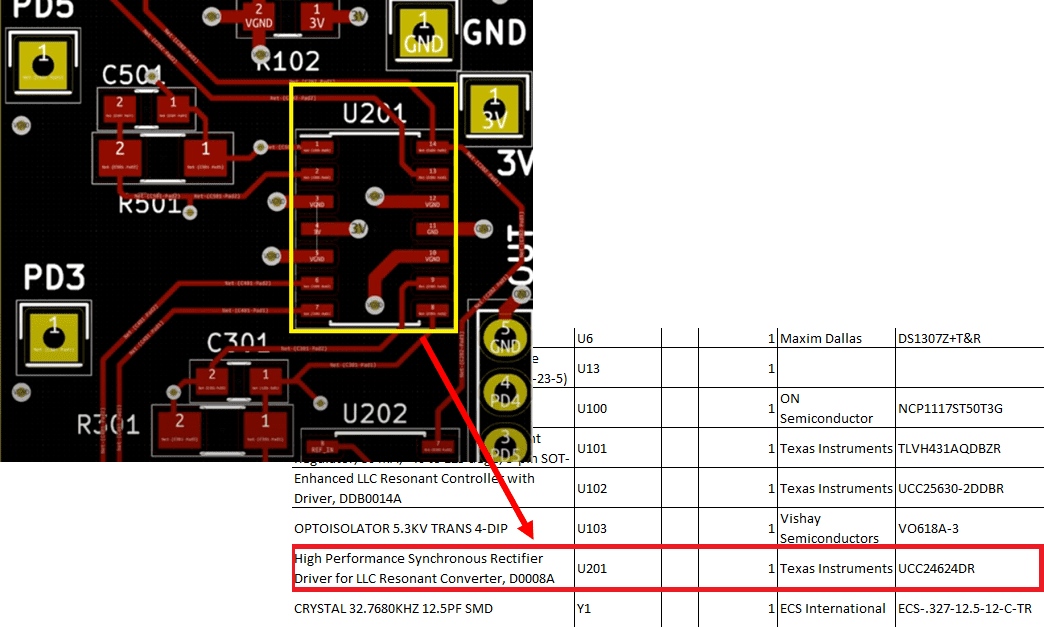
Check the BOM for the MPN
What to Do When You Can’t Identify Electronic Components
It’s always a good idea to rely on documentation if it’s available and known to be accurate. When reviving an old design, verify the old documentation’s accuracy by comparing the PCB’s footprint with the entry in the component datasheet. However, the original design documentation is often unavailable when reviving old designs or reverse engineering a board. In these cases, you will have to resort to other methods for component identification.
In the case of passive components, you can detach the component and test it directly with some simple measurements. Unfortunately, for ICs, you won’t have the luxury of relying on standard tests, and you’ll have to get creative to identify electronic components in this instance.
Without documentation, component markings, or the ability to test the part, the next step is to identify the component’s function (MCU, etc.). You can also determine the pinout by looking at the other parts connected to the IC, and you can usually identify the power level by looking at associated components and markings on the PCB. In this case, it’s advisable to look for a replacement that will give you the functionality you need.
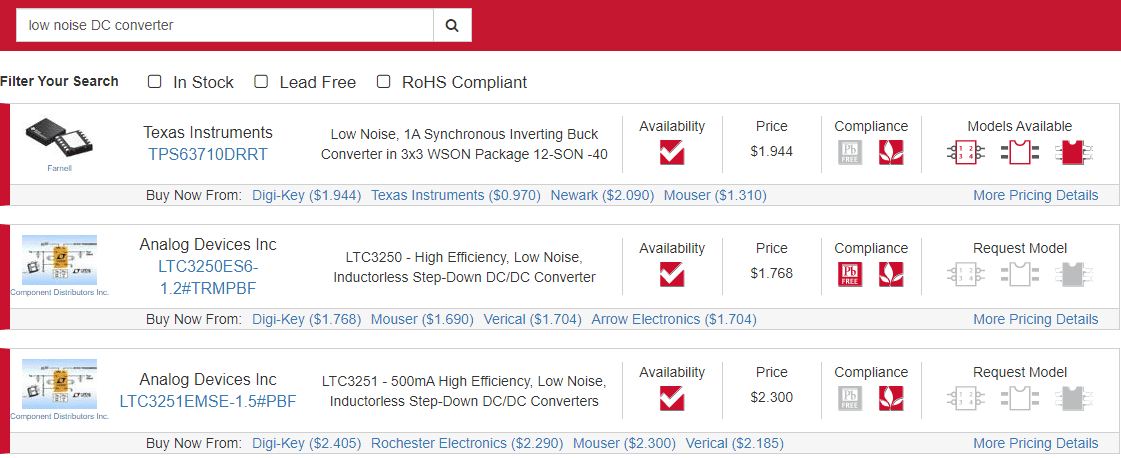
The best electronics search engines will help you find replacement components when your parts can’t be identified
If you’ve determined the function of the component you are replacing, try using an electronic parts search engine to find new parts. You can find the necessary components by searching for their specifications, function, part type, or manufacturer. An electronics parts search engine can also give you access to verified PCB footprints, schematic symbols, and sourcing data for your design.
When you need to find ECAD models verified by their component manufacturers, try using the electronics search engine features in Ultra Librarian. You can access verified distributor data and CAD data supplied by manufacturers. All CAD data is compatible with popular ECAD applications and will help you streamline your verification process.
If you’re looking for CAD models for common components or help to identify electronic components, Ultra Librarian helps by compiling all your sourcing and CAD information in one place.
Working with Ultra Librarian sets up your team for success to ensure streamlined and error-free design, production, and sourcing. Register today for free.








